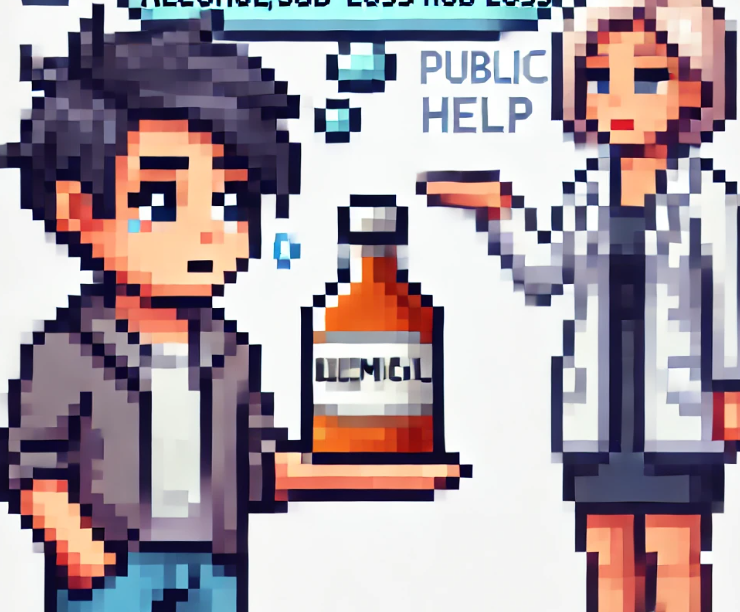
Self-Inflicted Chemical Injuries
In recent years, the issue of self-inflicted injuries due to chemical ingestion has become a significant public health concern, especially in low-income communities near major cities in South Africa. This blog will break down the key findings of a study that explores the risks and demographic factors associated with self-inflicted chemical ingestion injuries. The study’s insights are vital for public health practitioners and anyone interested in improving community health and safety.
What Are Self-Inflicted Chemical Injuries?
Self-inflicted chemical injuries occur when individuals intentionally or unintentionally consume harmful substances. These injuries can be severe, leading to long-term health problems or even death. The study we’re discussing focused on various chemicals, including paraffin (kerosene), which is commonly used in South African households but poses significant health risks.
Key Findings of the Study
The study analyzed data from 19 hospitals serving low-income areas to understand the factors contributing to self-inflicted chemical ingestion injuries. Here are the main findings:
- Prevalence: A staggering 92.1% of chemical ingestion injuries were self-inflicted.
- Demographics: Females were almost twice as likely to present with self-inflicted injuries compared to males. Young adults (18-29 years) and mature adults (30-44 years) were the most affected age groups.
- Alcohol: The presence of alcohol significantly increased the risk of self-inflicted injuries. Individuals with alcohol involvement were twice as likely to suffer from these injuries.
- Chemical Type: Injuries involving chemicals other than paraffin were three times more likely to be self-inflicted.
Why Should We Care?
Impact on Public Health
Understanding the factors behind self-inflicted chemical injuries can help shape better safety policies and interventions. For instance, restricting access to certain chemicals and increasing awareness about their dangers can reduce these incidents. Public health practitioners can use this information to target at-risk populations with tailored prevention programs.
Social Implications
The high prevalence of self-inflicted injuries among females and young adults highlights significant social and mental health issues. These groups may face unique stressors and challenges that contribute to such behaviors. By addressing these underlying issues, we can create a safer and healthier environment for these vulnerable populations.
The Role of Alcohol
One of the critical findings was the strong link between alcohol consumption and self-inflicted chemical injuries. Alcohol can impair judgment and increase risky behaviors, making it a significant factor in these incidents. Public health initiatives should include alcohol education and support programs to mitigate this risk.
Chemicals Other Than Paraffin
While paraffin is commonly used in South African households, the study found that other chemicals were more frequently involved in self-inflicted injuries. This could be due to the perceived potency and availability of these substances. Efforts to control access to harmful chemicals and educate the public about their dangers are crucial.
Moving Forward: Improving Safety and Support
To reduce self-inflicted chemical injuries, several steps can be taken:
- Policy Changes: Implement stricter regulations on the sale and distribution of hazardous chemicals. This includes better labeling and safer packaging to prevent accidental ingestion.
- Community Education: Raise awareness about the dangers of chemical ingestion and provide information on safe handling and storage practices.
- Mental Health Support: Offer accessible mental health services to address the root causes of self-harm behaviors. This includes counseling and support groups for individuals dealing with stress, depression, or substance abuse.
- Alcohol Intervention Programs: Develop targeted programs to reduce alcohol consumption and its associated risks. These could include community-based initiatives and support for individuals struggling with alcohol dependency.
What do you think?
To engage our readers and gather their thoughts on this important topic, consider these questions:
- Have you or someone you know ever experienced an incident involving the ingestion of harmful chemicals? How was it handled, and what support was available?
- What measures do you think communities can take to reduce the risk of self-inflicted chemical injuries, especially among vulnerable groups like young adults and females?
Conclusion
Self-inflicted chemical injuries are a critical public health issue that requires immediate attention. By understanding the factors contributing to these injuries, we can develop more effective prevention strategies and support systems. This study’s findings highlight the need for targeted interventions and policy changes to protect at-risk populations and improve overall community health.
SEO Focus Key Phrase
Boost Your Knowledge – Subscribe and Share!
Unlock key insights with ‘This Week in Public Health.’ Subscribe for free and share to drive change.
About the Author
Dr. Jonathan P. Scaccia, PhD, is a clinical-community psychologist with expertise in public health science and practice. He has led evaluation and research initiatives focusing on health equity, vaccine distribution, and organizational readiness. Dr. Scaccia has contributed to federal suicide prevention programs and vaccine equity strategies. He has been recognized for his impactful work and is a leading voice in advancing public health practices.



